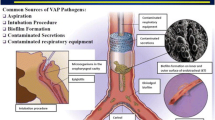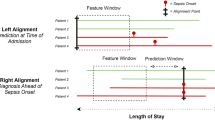Abstract
The In-hospital Mortality for PulmonAry embolism using Claims daTa (IMPACT) rule can accurately identify pulmonary embolism (PE) patients at low risk of early complications using claims data. We sought to externally validate the IMPACT and simplified Pulmonary Embolism Severity Index (sPESI) tools for predicting all-cause mortality and readmission. We used Veteran Health Administration data (10/1/2010–9/30/2015) to identify adults with ≥1 inpatient diagnosis code for acute PE, ≥12 months continuous medical and pharmacy benefits prior to the index PE, ≥90 days of post-event follow-up (unless death occurred) and ≥1 claim for an anticoagulant during the index PE stay. Prognostic accuracies of IMPACT and sPESI for 30- and 90-day all-cause mortality and 90-day readmission were estimated. Of 6,746 PE patients, 7.5 and 12.6% died at 30 and 90 days. Within 90 days, 20.1% were readmitted for any reason. Hospitalization for recurrent VTE and major bleeding occurred in 5.6 and 1.7% of patients. IMPACT classified 15.2% as low risk, while 28.4% were low risk per sPESI. Both tools displayed sensitivity >90% and negative predictive values (NPVs) >97% for 30-day mortality, but low specificity (range 16.2–30.0) and positive predictive values (PPVs) (range 8.7–9.5); with similar results observed for 90-day mortality. IMPACT’s sensitivity for all-cause readmission was numerically higher than sPESI (88.2 vs. 79.0%), but both had comparable NPVs (85.1 vs. 84.2%). Similar trends were observed for VTE or major bleeding readmissions. IMPACT classified patients for post-PE outcomes with similar accuracy as sPESI. IMPACT appears useful for identifying PE patients at low risk for early mortality or readmission in claims-based studies.


Similar content being viewed by others
References
Kearon C, Akl EA, Ornelas J, Blaivas A, Jimenez D, Bounameaux H, Huisman M, King CS, Morris T, Sood N, Stevens SM, Vintch JRE, Wells P, Woller SC, Moores CL (2016) Antithrombotic therapy for VTE disease: CHEST guideline and expert panel report. Chest 149:315–352
Konstantinides SV, Torbicki A, Agnelli G, Danchin N, Fitzmaurice D, Galiè N et al (2014) 2014 ESC guidelines on the diagnosis and management of acute pulmonary embolism. Eur Heart J 35:3033–3069
Kohn CG, Mearns ES, Parker MW, Hernandez AV, Coleman CI (2015) Prognostic accuracy of clinical prediction rules for early post-pulmonary embolism all-cause mortality: a bivariate meta-analysis. Chest 147:1043–1062
Jiménez D, Aujesky D, Moores L, Gómez V, Lobo JL, Uresandi F et al (2010) Simplification of the pulmonary embolism severity index for prognostication in patients with acute symptomatic pulmonary embolism. Arch Intern Med 170:1383–1389
Coleman CI, Kohn CG, Bunz TJ (2015) Derivation and validation of the In-hospital mortality for pulmonary embolism using claims daTa (IMPACT) prediction rule. Curr Med Res Opin 31:1461–1468
Weeda ER, Kohn CG, Fermann GJ, Peacock WF, Tanner C, McGrath D, Crivera C, Schein JR, Coleman CI (2016) External validation of prognostic rules for early post-pulmonary embolism mortality: assessment of a claims-based and three clinical-based approaches. Thromb J. 14:7
Waller D (2006) How VA hospitals became the best. Time. 168:36–37
Elixhauser A, Steiner C, Harris DR, Coffey RM (1998) Comorbidity measures for use with administrative data. Med Care 36:8–27
Geersing GJ, Bouwmeester W, Zuithoff P, Spijker R, Leeflang M, Moons KG (2012) Search filters for finding prognostic and diagnostic prediction studies in Medline to enhance systematic reviews. PLoS One 7:e32844
Trikalinos TA, Balion CM, Coleman CI et al (2012) Chapter 8: meta-analysis of test performance when there is a gold standard. J Gen Intern Med 27(suppl 1):S56–S66
Coleman CI, Kohn CG, Crivera C, Schein JR, Peacock WF (2015) Validation of the multivariable In-hospital Mortality for PulmonAry embolism using Claims daTa (IMPACT) prediction rule within an all-payer inpatient administrative claims database. BMJ Open 5:e009251
Kohn CG, Peacock WF, Fermann GJ, Bunz TJ, Crivera C, Schein JR et al (2016) External validation of the in-hospital mortality for PulmonAry embolism using Claims daTa (IMPACT) multivariable prediction rule. Int J Clin Pract 70:82–88
Coleman CI, Peacock WF, Fermann GJ, Crivera C, Weeda ER, Hull M, DuCharme M, Becker L, Schein JR (2016) External validation of a multivariable claims-based rule for predicting in-hospital mortality and 30-day post-pulmonary embolism complications. BMC Health Serv Res. 16:610
Nguyen E, Peacock WF, Fermann GJ et al (2016) External validation of the multivariable ‘in-hospital mortality for PulmonAry embolism using claims daTa’ prediction rule in the premier hospital database. Eur Heart J Qual Care Clin Outcomes. doi:10.1093/ehjqcco/qcw046
Author information
Authors and Affiliations
Corresponding author
Ethics declarations
Conflict of interest
CIC has received grant funding and consultancy fees from Janssen Pharmaceuticals; Bayer Pharma AG and Boehringer-Ingelheim Pharmaceuticals, Inc. PW has received grant funding from Bristol Myers Squib and Pfizer, is on the advisory board and has received speaker’s fees from Bayer Healthcare, has received consultancy fees from Janssen Pharmaceuticals, and served on a writing committee with Itreas. CC and JRS are employees of Janssen Scientific Affairs LLC. WFP has received grant funding and consultancy fees from Janssen Pharmaceuticals and Portola. GJF has received grant funding from Pfizer and is on the advisory board and speaker’s bureau for Janssen Pharmaceuticals. LW and OB are employees of STATinMed, Plano, TX, USA. CGK, ERW and NK have no conflicts of interest germane to this manuscript to report. No non-financial conflicts of interest exist for any of the authors.
Statement of human and animal rights
This article does not contain any studies with human participants or animals performed by any of the authors.
Informed consent
None.
Electronic supplementary material
Below is the link to the electronic supplementary material.
Rights and permissions
About this article
Cite this article
Kohn, C.G., Weeda, E.R., Kumar, N. et al. External validation of a claims-based and clinical approach for predicting post-pulmonary embolism outcomes among United States veterans. Intern Emerg Med 12, 613–619 (2017). https://doi.org/10.1007/s11739-017-1625-9
Received:
Accepted:
Published:
Issue Date:
DOI: https://doi.org/10.1007/s11739-017-1625-9




